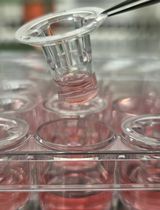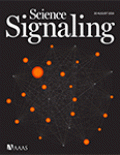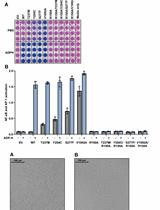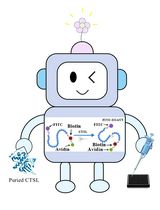- EN - English
- CN - 中文
Screening for Novel Endogenous Inflammatory Stimuli Using the Secreted Embryonic Alkaline Phosphatase NF-κB Reporter Assay
使用分泌型胚胎碱性磷酸酶NF-κB报告基因实验筛选新型内源性炎症刺激物质
发布: 2017年04月05日第7卷第7期 DOI: 10.21769/BioProtoc.2220 浏览次数: 10281
评审: Nicoletta CordaniPatrick Ovando-RocheHui Zhu

相关实验方案

研究免疫调控血管功能的新实验方法:小鼠主动脉与T淋巴细胞或巨噬细胞的共培养
Taylor C. Kress [...] Eric J. Belin de Chantemèle
2025年09月05日 2538 阅读
Abstract
An immune response can be activated by pathogenic stimuli, as well as endogenous danger signals, triggering the activation of pattern recognition receptors and initiating signalling cascades that lead to inflammation. This method uses THP1-BlueTM cells, a human monocytic cell line which contains an embryonic alkaline phosphatase reporter gene allowing the detection of NF-κB-induced transcriptional activation. We validated this protocol by assessing NF-κB activation after stimulation of toll-like receptor 4 (TLR4) by two different agonists: lipopolysaccharide (LPS), derived from the cell wall of Gram negative bacteria, and tenascin-C, an extracellular matrix protein whose expression is induced upon tissue injury. We then used this protocol to screen for potential new endogenous TLR4 agonists, but this method can also be used as a quick, economical and reliable means to assay the activity of other inflammatory stimuli resulting in TLR-dependent NF-κB activation.
Keywords: Innate immunity (先天免疫)Background
The immune system has evolved to recognize not only pathogenic stimuli such as bacterial components and viral nucleic acids, but also endogenous danger signals including proteins secreted from necrotic cells or expressed upon tissue damage. Both types of stimuli are sensed by pattern recognition receptors, initiating signalling cascades that trigger inflammatory responses. Nuclear factor kappa-light-chain-enhancer of activated B cells (NF-κB) is a transcription factor essential for the activation of the immune response to infection and tissue damage. NF-κB has an important role in the expression of a wide range of inflammatory mediators following pattern recognition receptor activation, including cytokines (such as tumour necrosis factor α [TNFα], interleukin-6 and interleukin-1), chemokines (e.g., interleukin-8 or CXCL1), proteases, growth factors and MHC-related molecules, among others. To assess the activation of this pathway downstream of TLR4, we used the commercially available cell line THP1-BlueTM NF-κB (Invivogen). These cells are stably transfected with a construct containing a secreted embryonic alkaline phosphatase (SEAP) gene induced by the NF-κB transcription factor. The construct contains an interferon-β minimal promoter fused to five copies of the NF-κB consensus transcriptional response element and three copies of the c-Rel binding site, which drives the expression of the reporter gene. After cell stimulation with pathogenic or endogenous stimuli, NF-κB activation leads to the secretion of SEAP, which is then quantified using the colorimetric reagent QUANTI-BlueTM. This is a quick and reliable method to assess activation of NF-κB downstream of toll-like receptors, as the amount of SEAP in the media correlates with the triggering of this signalling pathway. However, this is an engineered cell line that does not express a full complement of inflammatory effector molecules (see Note 5), and so whilst useful in screening for NF-κB activation, data should always be confirmed in additional experimental systems, for example in primary macrophages, or in vivo.
Materials and Reagents
- Pipette tips
20 µl (StarLabs, TipOne®, catalog number: S1110-3800 )
200 µl (StarLabs, TipOne®, catalog number: S1111-0806 )
1,000 µl (StarLabs, TipOne®, catalog number: S1111-6801 ) - Corning 15 ml PP centrifuge sterile tubes (Corning, catalog number: 430791 )
- Cell culture flask 75 cm2 (VWR, catalog number: 734-0012 )
- 96 well plate flat-bottom (VWR, catalog number: 734-0023 )
- THP1-BlueTM NF-κB cells (InvivoGen, catalog number: thp-nfkb )
- Positive control: LPS from E. coli, Serotype EH100 (Ra) (TLRgradeTM) (Enzo life sciences, catalog number: ALX-581-010-L002 )
- Test inflammatory stimulus: for example recombinant tenascin-C protein or the fibrinogen like globe domain (FBG) of tenascin-C protein (synthesized as described in Midwood et al., 2009)
- Roswell Park Memorial Institute (RPMI) 1640 with L-glutamine (Lonza, catalog number: BE12-702F )
- Fetal bovine serum (FBS), Qualified, heat inactivated (Thermo Fisher Scientific, GibcoTM, catalog number: 10500064 )
- Penicillin/streptomycin (Thermo Fisher Scientific, GibcoTM, catalog number: 15140122 )
- NormocinTM (InvivoGen, catalog number: ant-nr-1 )
- Blasticidin HCl (Thermo Fisher Scientific, GibcoTM, catalog number: R21001 )
- QUANTI-BlueTM (InvivoGen, catalog number: rep-qb1 )
- ThP1 media without blasticidin (see Recipes)
- ThP1 media with blasticidin (see Recipes)
- QUANTI-BlueTM solution (see Recipes)
Equipment
- P20, P200 and P1000 pipettes
- 37 °C water bath
- Hemocytometer
- CO2 incubator
- FluoStar Omega plate reader
- Centrifuge (Thermo Fisher Scientific, model: HeraeusTM MAgefugeTM 16 )
- Rotor (Thermo Fisher Scientific, Thermo ScientificTM, model: TX-400 4 x 400 mL Swinging Bucket Rotor , catalog number: 75003629)
Software
- Graph Pad Prism
Procedure
文章信息
版权信息
© 2017 The Authors; exclusive licensee Bio-protocol LLC.
如何引用
Zuliani-Alvarez, L., Piccinini, A. M. and Midwood, K. S. (2017). Screening for Novel Endogenous Inflammatory Stimuli Using the Secreted Embryonic Alkaline Phosphatase NF-κB Reporter Assay. Bio-protocol 7(7): e2220. DOI: 10.21769/BioProtoc.2220.
分类
免疫学 > 宿主防御 > 人
免疫学 > 免疫细胞功能 > 巨噬细胞
生物化学 > 蛋白质 > 活性
您对这篇实验方法有问题吗?
在此处发布您的问题,我们将邀请本文作者来回答。同时,我们会将您的问题发布到Bio-protocol Exchange,以便寻求社区成员的帮助。
提问指南
+ 问题描述
写下详细的问题描述,包括所有有助于他人回答您问题的信息(例如实验过程、条件和相关图像等)。
Share
Bluesky
X
Copy link











